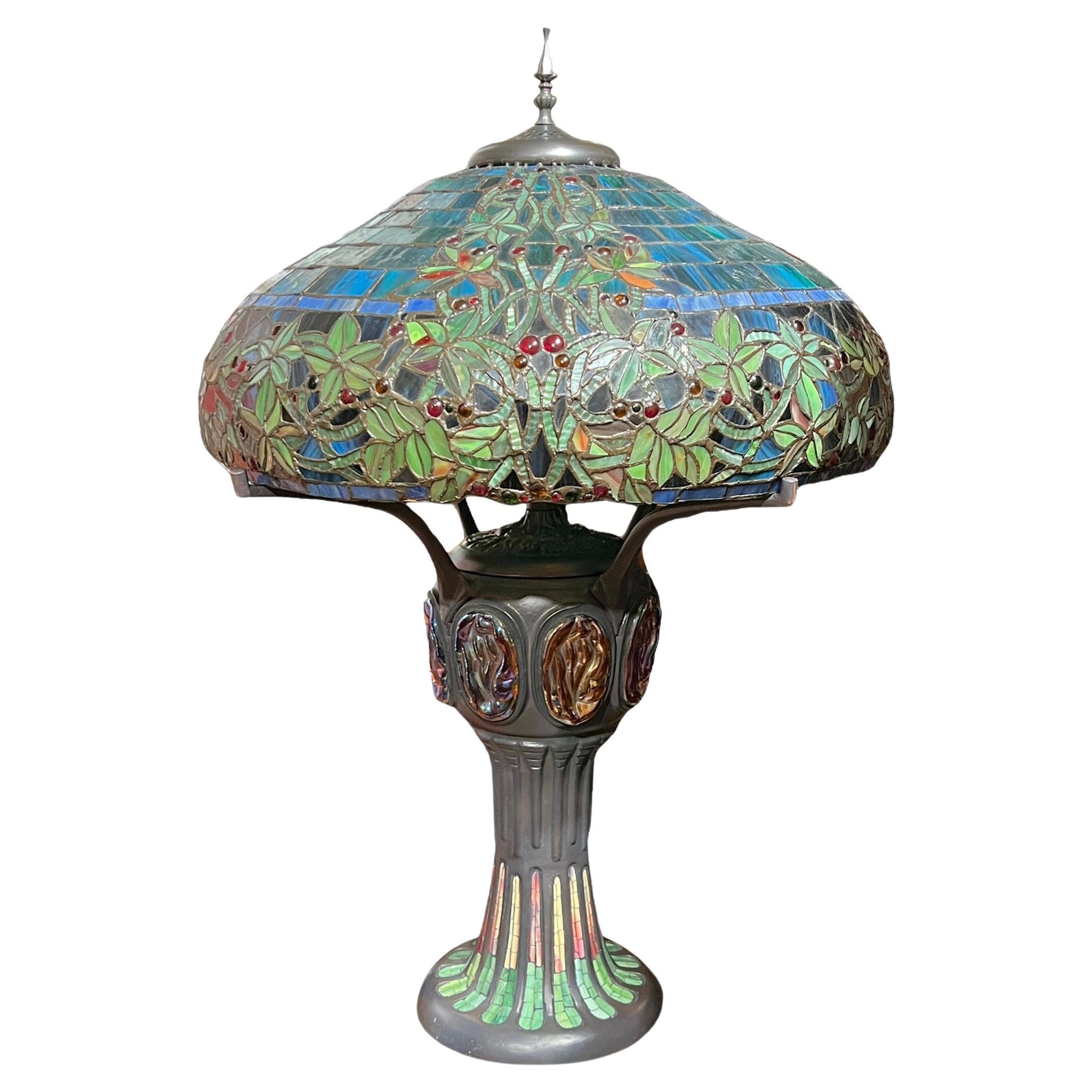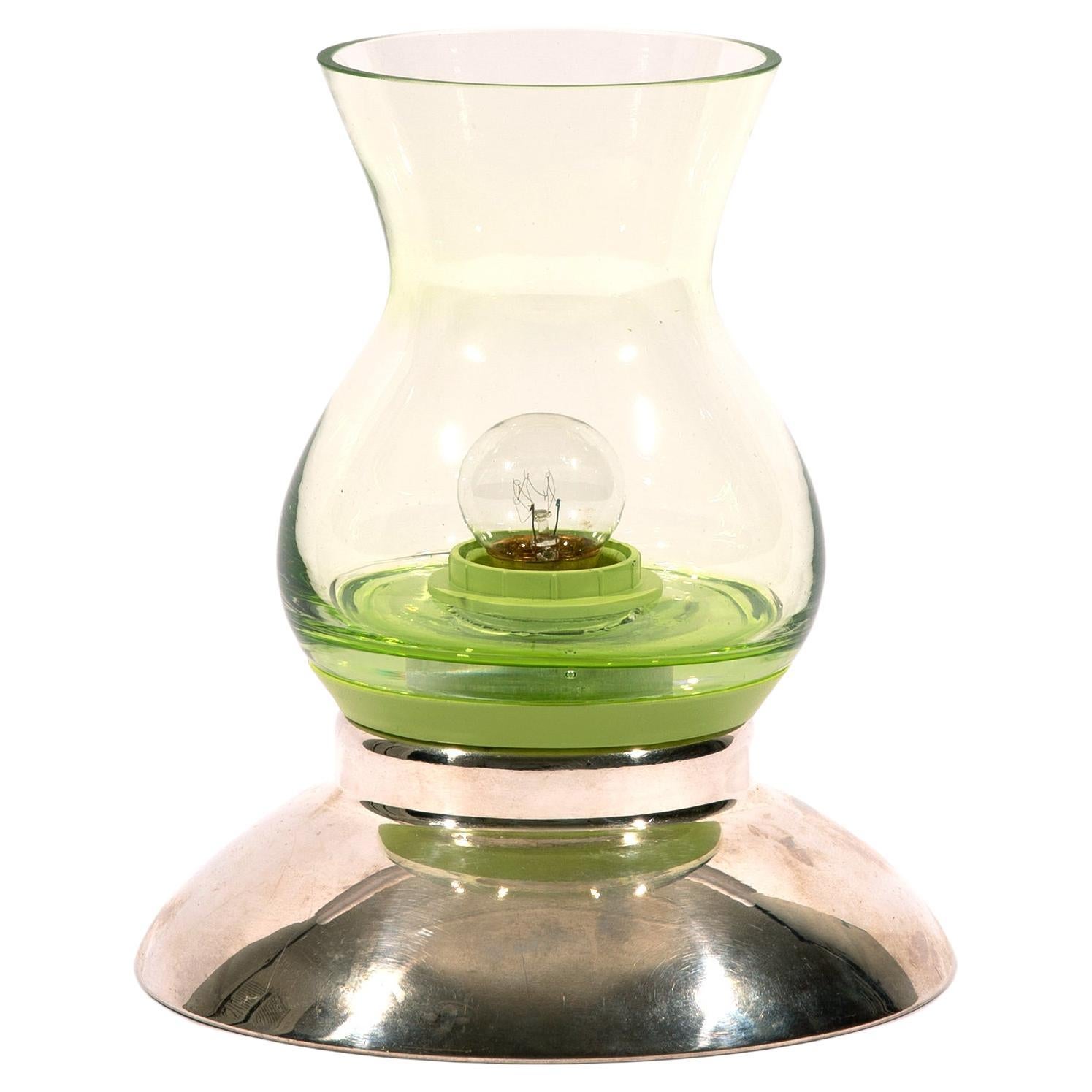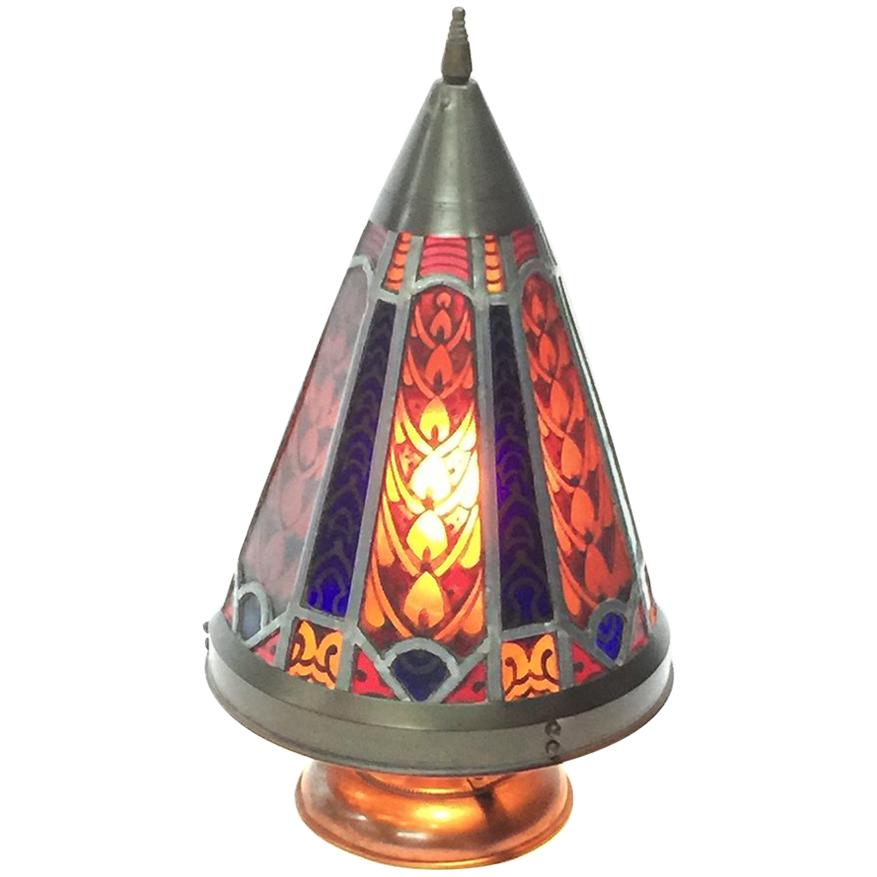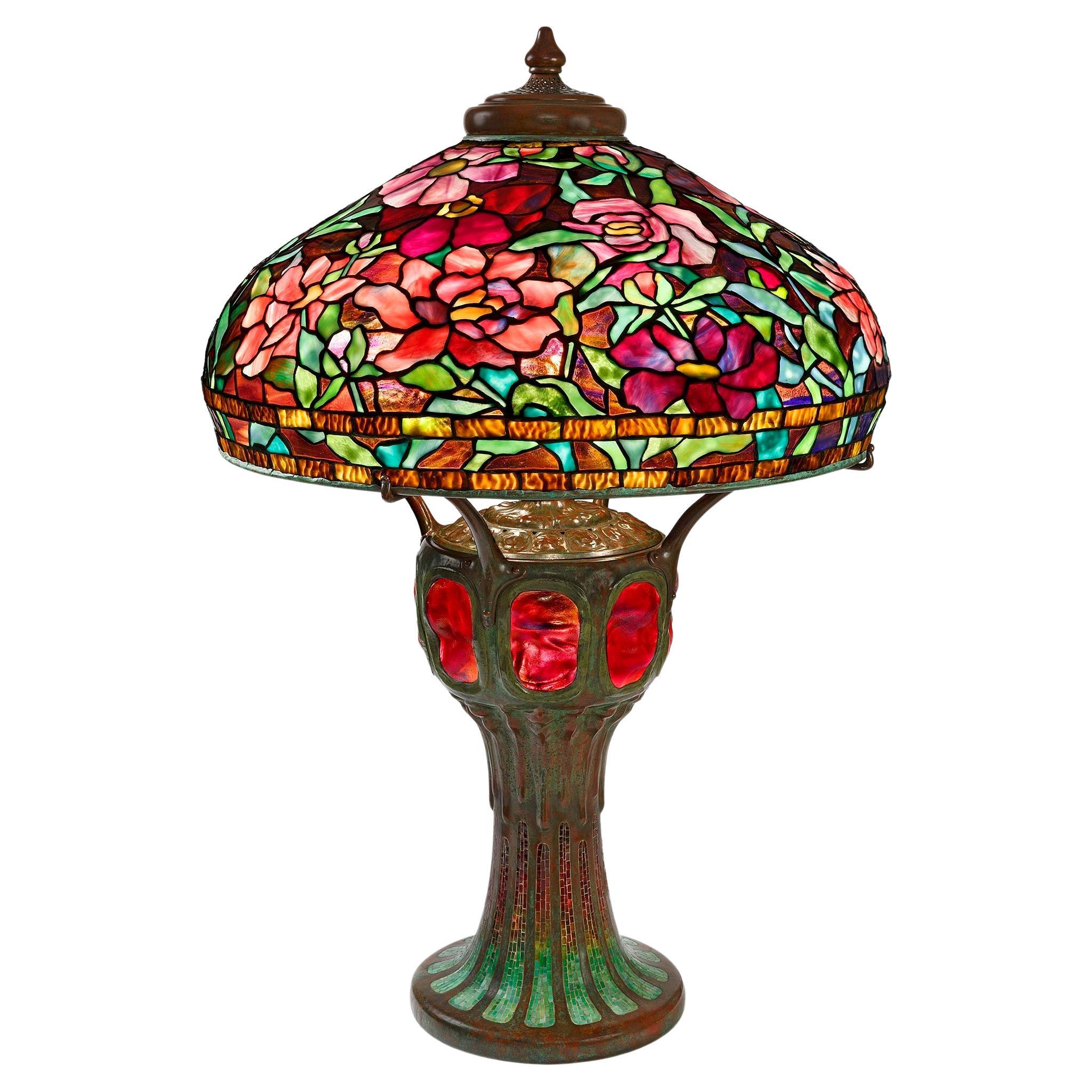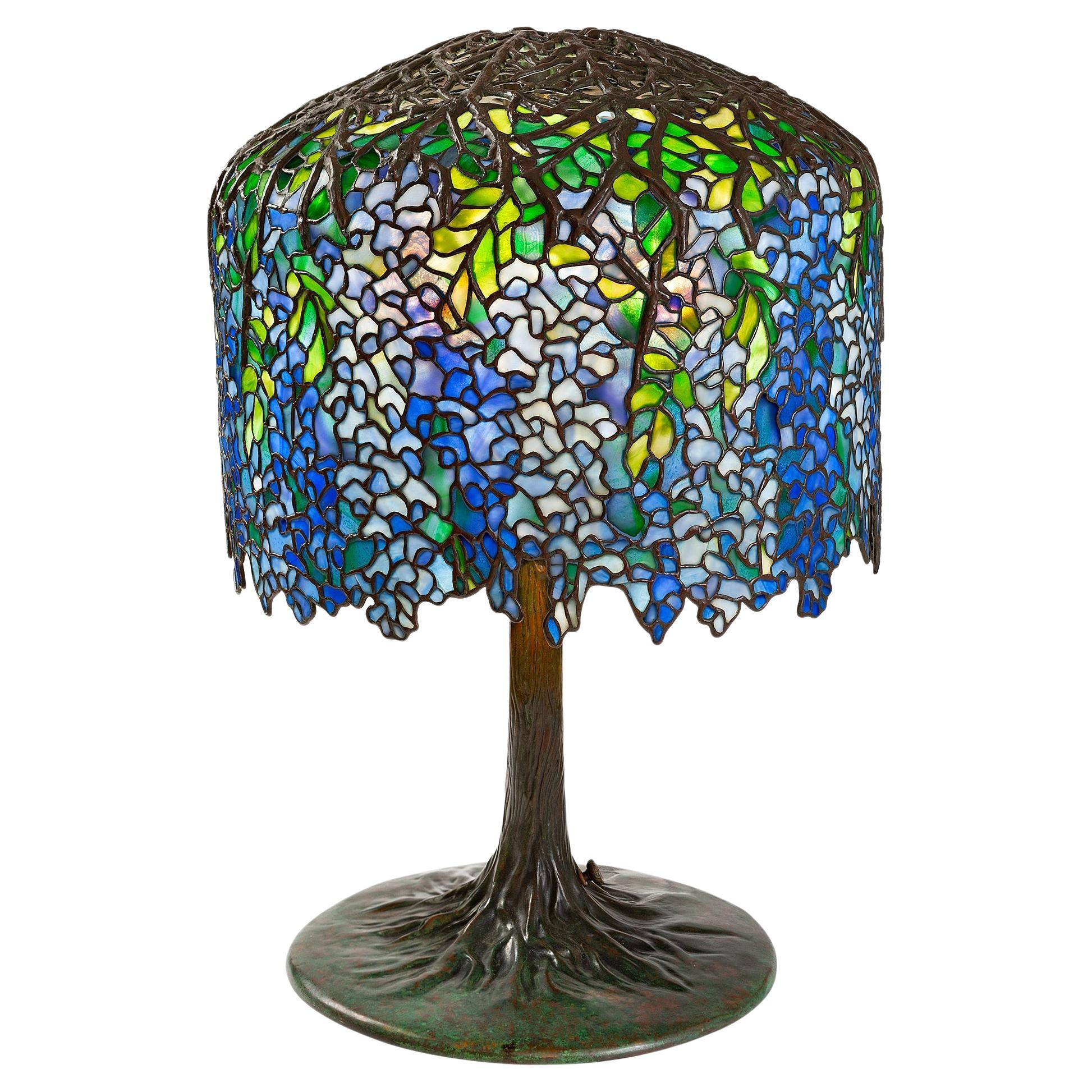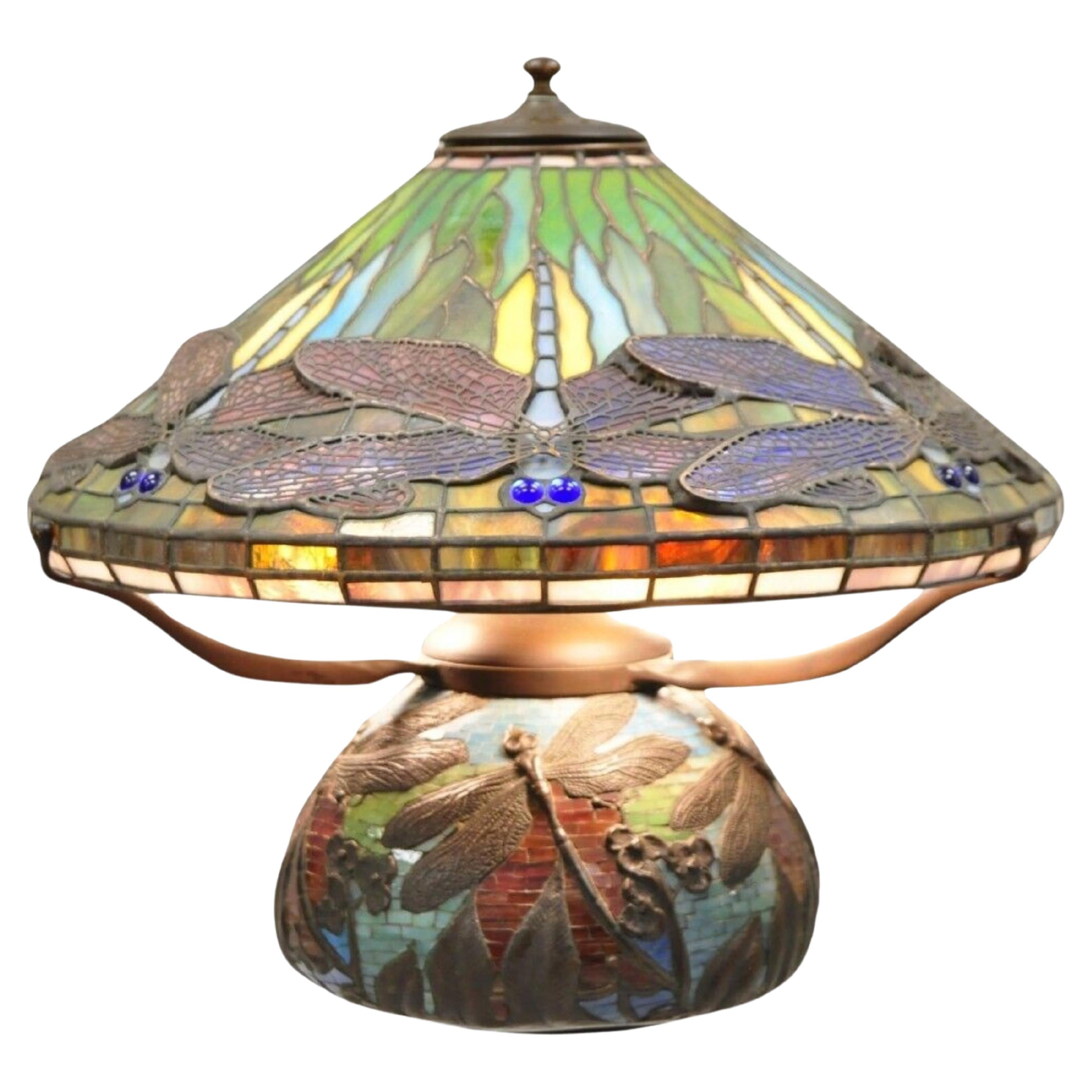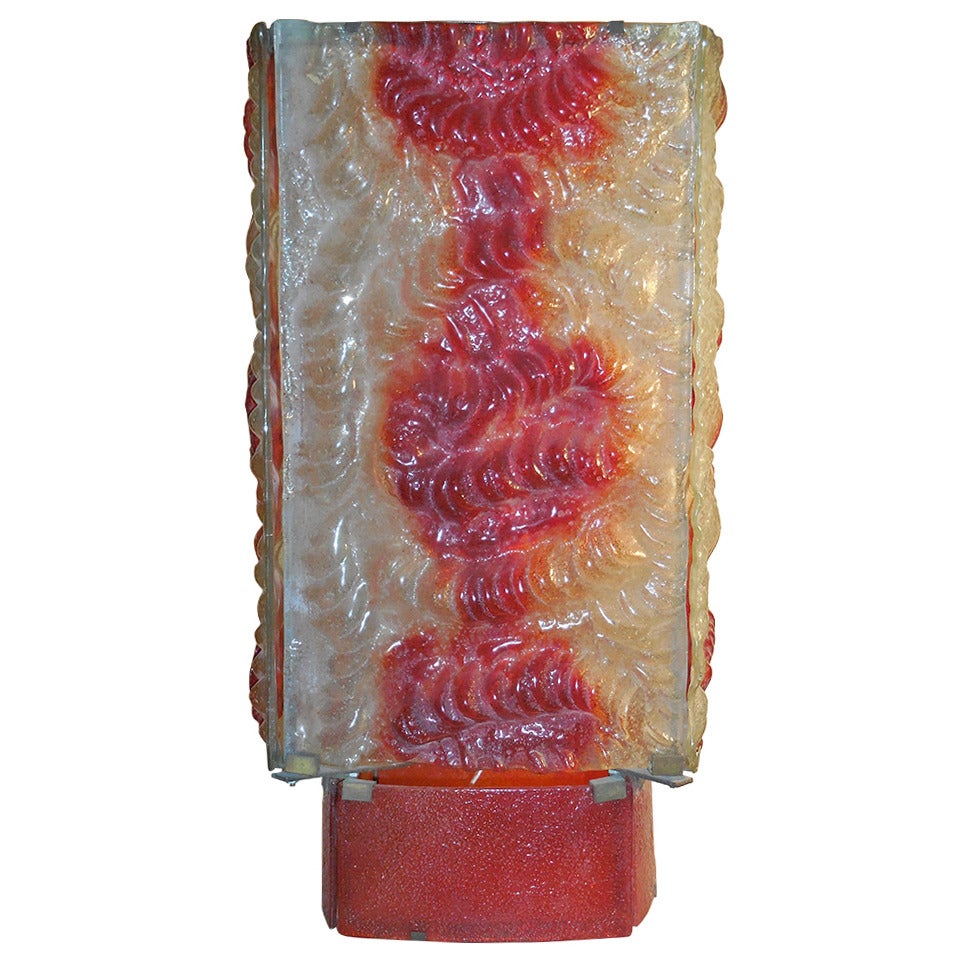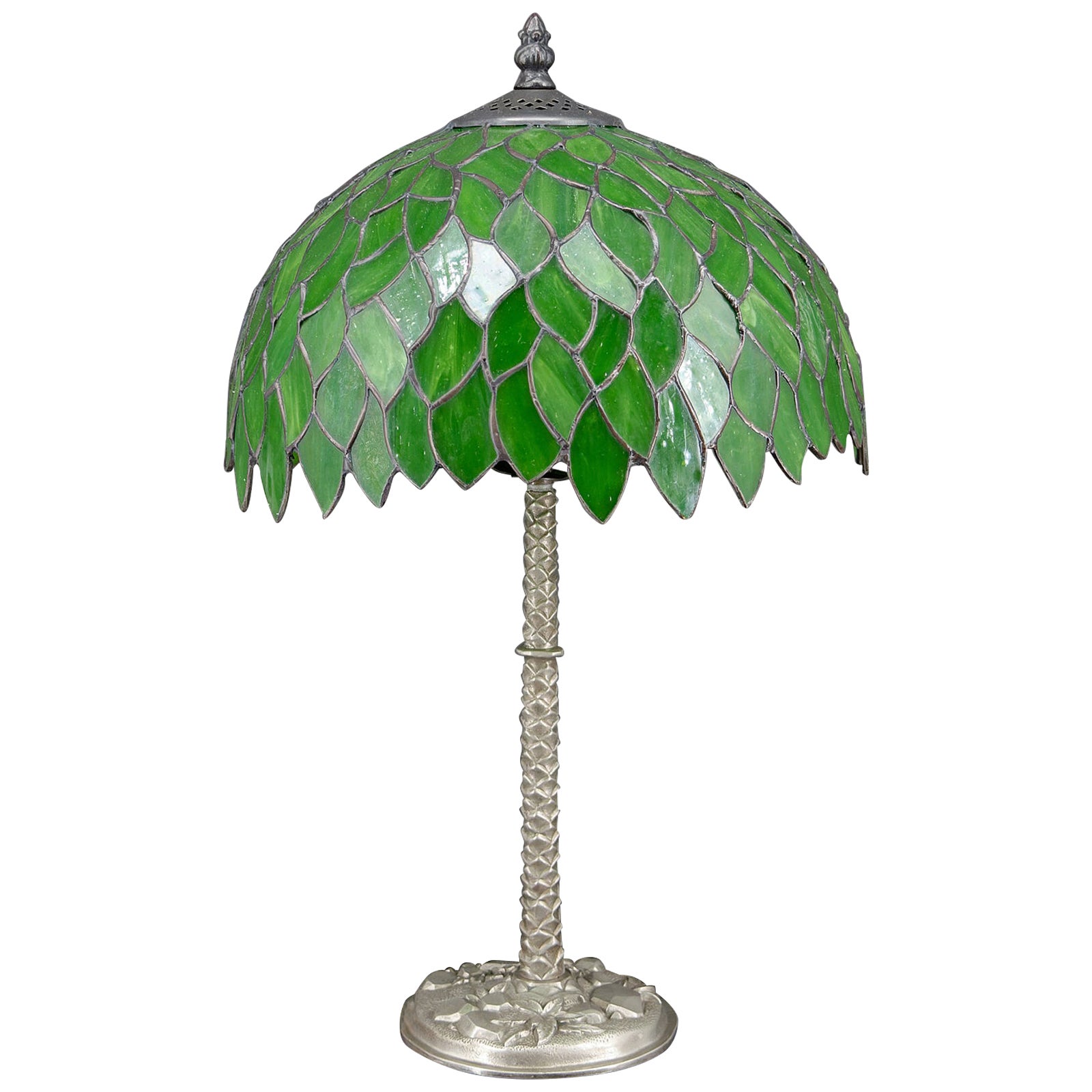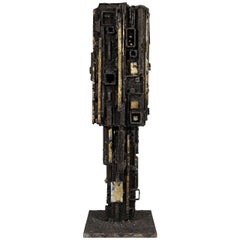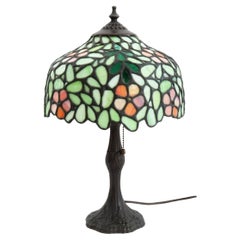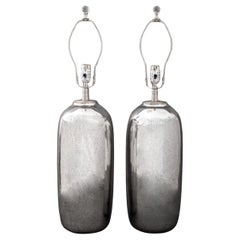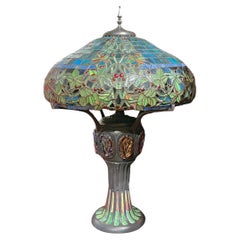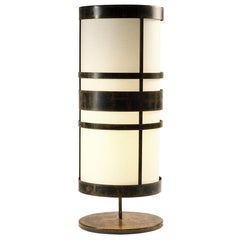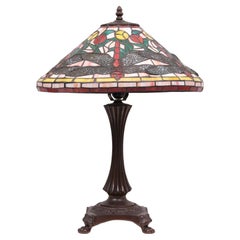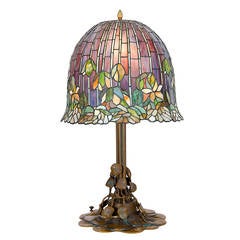
Contemporary Stained Glass Table Lamp Inspired by Tiffany
View Similar Items
Want more images or videos?
Request additional images or videos from the seller
1 of 8
Contemporary Stained Glass Table Lamp Inspired by Tiffany
About the Item
- Similar to:Louis Comfort Tiffany (Designer)
- Dimensions:Height: 32 in (81.28 cm)Diameter: 18 in (45.72 cm)
- Place of Origin:
- Period:
- Date of Manufacture:21st Century
- Condition:Wear consistent with age and use.
- Seller Location:New York, NY
- Reference Number:Seller: S138XX1stDibs: 14111188934562
About the Seller
4.9
Vetted Seller
These experienced sellers undergo a comprehensive evaluation by our team of in-house experts.
1stDibs seller since 2010
2,451 sales on 1stDibs
Typical response time: 2 hours
More From This SellerView All
- Brutalist Wrought Iron Table Lamp Inspired by Paul EvansBy Paul EvansLocated in New York, NYA Brutalist wrought iron table lamp in the style of Paul Evans. This lamp takes one tube bulb. Newly rewired. Good vintage condition with age appropriate wear and patina.Category
Late 20th Century Brutalist Table Lamps
MaterialsWrought Iron
$6,800 Sale Price20% Off - Tiffany Studios Manner Boudoir Table LampLocated in New York, NYAccent table lamp having stained glass shade in the manner of Tiffany Studios raised on patinated chase base, circa late twentieth century.Category
20th Century Table Lamps
MaterialsStained Glass
- Pair of Contemporary Silvered Glass Vase LampsLocated in New York, NYPair of Contemporary Silvered Glass Vase Lamps, silver tone, with glass ball finial. Dealer: S138XXCategory
Late 20th Century Unknown Modern Table Lamps
MaterialsChrome
$1,200 / set - Modern Glass Painted "Diana" Table LampLocated in New York, NYModern glass table lamp, late 20th century, of cylindrical form with gilt decoration depicting Diana/Artemis, Goddess of the Hunt. Measure: Lamp base: 20" H.Category
Mid-20th Century Table Lamps
MaterialsGlass, Paint
- Venetian Murano Glass Cage-Form Table LampLocated in New York, NYVenetian Murano white opaque and colorless lattice glass-blown vessel within a conforming gilt cage-form surround on gilt base. In good vintage condition...Category
Late 20th Century Italian Other Table Lamps
MaterialsMetal
- Art Deco Style Slag Glass Table LampLocated in New York, NYArt Deco modern white metal table lamp with light purple and white slag glass shade.Category
20th Century Table Lamps
MaterialsMetal
You May Also Like
- Tiffany style Leaded Glass Table LampBy Louis Comfort TiffanyLocated in New York, NYLovely, large leaded glass table lamp after Louis Comfort Tiffany with shade featuring berry vine motif and standard with iridescent turtleback glass. 34 1/2 inches tall and 22 inch...Category
Late 20th Century Unknown Art Nouveau Table Lamps
MaterialsArt Glass
- Contemporary Art Deco Inspired Circus Table Lamp Stained BlackBy Mambo Unlimited IdeasLocated in Lisbon, PTRound perfection inspired by Art Deco's shapes, circus lamp will be a wonderful addition to any space. In several lacquered metal colors and 100% cotton la...Category
2010s Portuguese Art Deco Table Lamps
MaterialsBrass
- Tiffany style stained Glass Dragonfly Table lamp 1980sBy Tiffany & Co.Located in Den Haag, NLBeautiful , Tiffany style table lamp, Bronze base and comes with a very nice Dragonfly stained glass shade .Category
Vintage 1980s American Art Nouveau Table Lamps
MaterialsGlass
- Kerosene Lamp Inspired Green Glass Silver Contemporary Table Lamp by NusproduktLocated in Brooklyn, NYThe "Kerosene" lamp is a one-of-a-kind, handcrafted piece that brings together vintage and contemporary design elements. The lantern-like glass top, made of green glass, and the silver bowl bottom evoke the feeling of 19th-century kerosene or paraffin lamps...Category
2010s American Minimalist Table Lamps
MaterialsConcrete
- Tiffany Studios New York "Peony" Table LampBy Louis Comfort Tiffany, Tiffany StudiosLocated in New York, NYTiffany’s “Peony” table lamp was a work grounded in naturalism but reaching for the divine. With a shade of resplendent blooms and a mosaic base evoking the hallowed ground of church floors, Tiffany’s peony lamp demonstrates his foundation in both Art nouveau and ecclesiastical art. To depict his multi-hued bouquet, Tiffany depicted two different cultivars, a Greek peony, and a Japanese peony. Tiffany used burgundy glass streaked with lapis to express the richness of the Greek Peony. Favored by neoclassical artists for their symmetry and simplicity, Tiffany featured the bloom in the architecture of his country estate. To represent the candy-striped Japanese peony Shima Nishiki, Tiffany used cream glass streaked with fuschia. The shade elegantly depicts different stages of growth from the bud, first bloom, peak bloom, to wilting. When peony petals wilt, their veins darken, and their form puckers. Tiffany’s glass selectors chose a stone textured glass called granite glass to express the wilting of the petals and their pronounced venation. The background and border of the shade is a golden amber, streaked with magenta and blue. The top-down perspective of the peony with a dirt background was a type of painting called “Rasenstück”, a detailed study of a piece of turf. The crux of the Rasenstück was the elevation of the humble. Popularized in the nineteenth century by the American Pre-Raphaelites, the movement believed in the idea of "truth to nature". The principle encouraged painters to capture the natural world as truthfully as possible, not romanticizing what they saw. In these nature studies, painters depicted flowers and trees in the soil from which they grew. While sublime on its own, the shade and base taken together paint a picture of Tiffany’s Japanese garden. Peonies imported from the far east bordered serene ponds. A frieze of turtleback tiles hypnotizes the viewers with its scarlet glow, evoking the red flash of a sunset, as seen through a field of cattails, rendered in bronze. Below it, the row of cat tails blends into a mosaic of red, yellow, and green glass. While Tiffany’s chief designer Clara Driscoll is most famous for her naturalistic lamp designs, the bread and butter of Tiffany Studios was its ecclesiastical department. Red, yellow, and green colorways were widely used in the depiction of Baroque angels, whose wings were modeled after birds of paradise. As hunters removed their legs upon sale, many believed they neither ate nor drank, and instead floated ethereally like angels. A lamp such as this epitomizes Tiffany’s understanding of his artistic vision in the context of the entire history of artistic expression. Since falling in love with glass at age twelve in the cathedrals of Chartres, light itself became a representation of divinity. A contemporary critic described Tiffany’s mosaics...Category
Early 20th Century American Table Lamps
MaterialsBronze, Lead
Price Upon Request - Tiffany Studios Bronze and Favrile Table LampBy Tiffany Studios, Louis Comfort TiffanyLocated in Dallas, TXTiffany Studios Bronze and favrile Desk lamp Damascene iridescent glass with greens, blues, goals and silver. Fine reticulated and patinated bronze base. Original favrile pearl heat cap. Original socket and paddle switch. A rare and fabulous table lamp. New York c. 1910 patinated bronze, Favrile glass Height: 20 Inches (51 cm) Diameter: 7 Inches (18 cm) Impressed to base 'TIFFANY STUDIOS NEW YORK'. Etched to inner top aperture 'L.C.T. Favrile'. Provenance: Private Collection, New York Literature: Tiffany Lamps and Metalware, Alastair Duncan, pg. 90 illustrates base and shade AVANTIQUES is dedicated to providing an exclusive curated collection of Fine Arts, Paintings, Bronzes, Asian treasures, Art Glass and Antiques. Our inventory represents time-tested investment quality items with everlasting decorative beauty. We look forward to your business and appreciate any reasonable offers. All of our curated items are vetted and guaranteed authentic and as described. Avantiques only deals in original antiques and never reproductions. We stand behind our treasures with a full money back return policy if the items are not as described. Tiffany glass refers to the many and varied types of glass developed and produced from 1878 to 1933 at the Tiffany Studios in New York, by Louis Comfort Tiffany and a team of other designers, including Clara Driscoll, Agnes F. Northrop and Frederick Wilson. In 1865, Tiffany traveled to Europe, and in London he visited the Victoria and Albert Museum, whose extensive collection of Roman and Syrian glass made a deep impression on him. He admired the coloration of medieval glass and was convinced that the quality of contemporary glass could be improved upon. In his own words, the "Rich tones are due in part to the use of pot metal full of impurities, and in part to the uneven thickness of the glass, but still more because the glass maker of that day abstained from the use of paint". Tiffany was an interior designer, and in 1878 his interest turned toward the creation of stained glass, when he opened his own studio and glass foundry because he was unable to find the types of glass that he desired in interior decoration. His inventiveness both as a designer of windows and as a producer of the material with which to create them was to become renowned. Tiffany wanted the glass itself to transmit texture and rich colors and he developed a type of glass he called "Favrile". The glass was manufactured at the Tiffany factory...Category
Vintage 1910s American Art Nouveau Table Lamps
MaterialsBronze
Recently Viewed
View AllMore Ways To Browse
Tiffany Louis Lamp
Stained Glass Lamp Shade
Stained Glass Lamp Shade Used
Louis Comfort Tiffany Tiffany Lamps
Stained Glass By Tiffany
Lily Pad Table
Used Tiffany Style Lamps
Lily Shade
Table Lamp Style Tiffany
Tiffany Style Table Lamps
Tiffany Style Table Lamp
Tiffany Lamp Stained
Tiffany Stained Glass Lamps
Stained Glass Tiffany Style
Louis Tiffany Stained Glass
Tiffany Style Shade
Lamp Base Tiffany Style
Louis Comfort Tiffany Stained Glass
